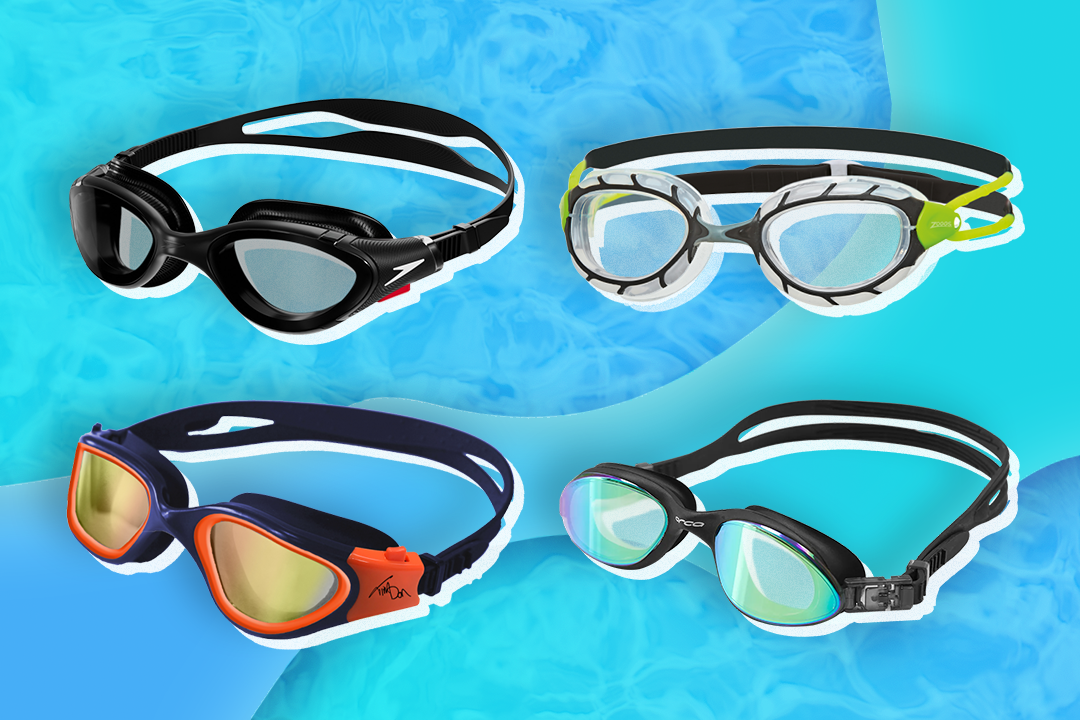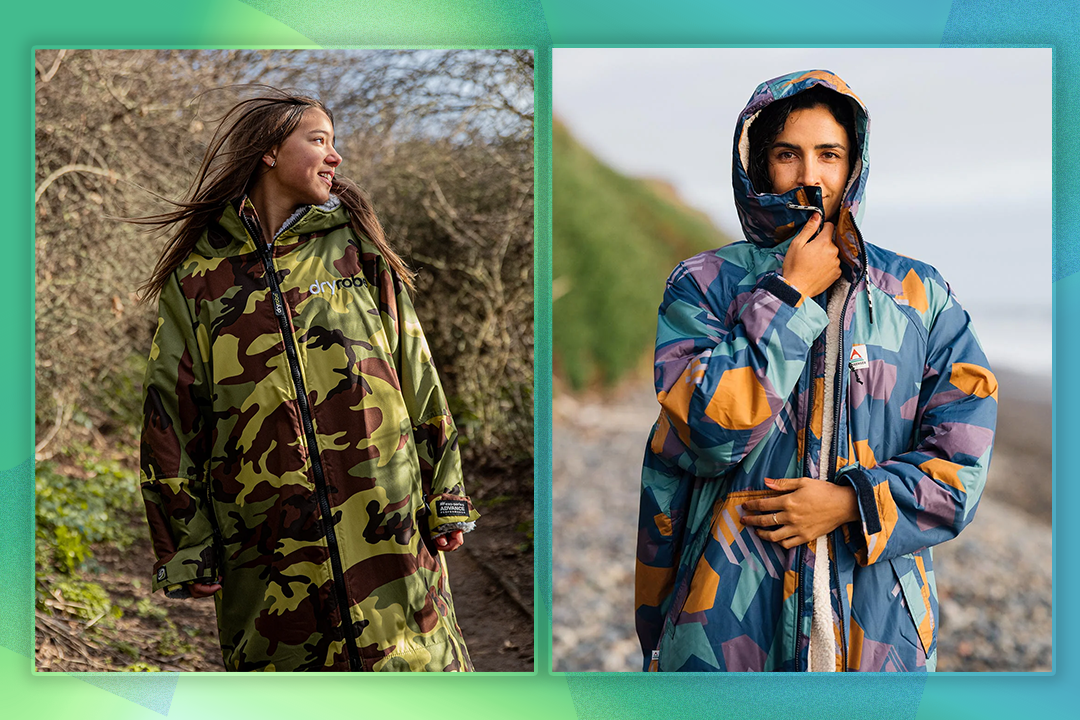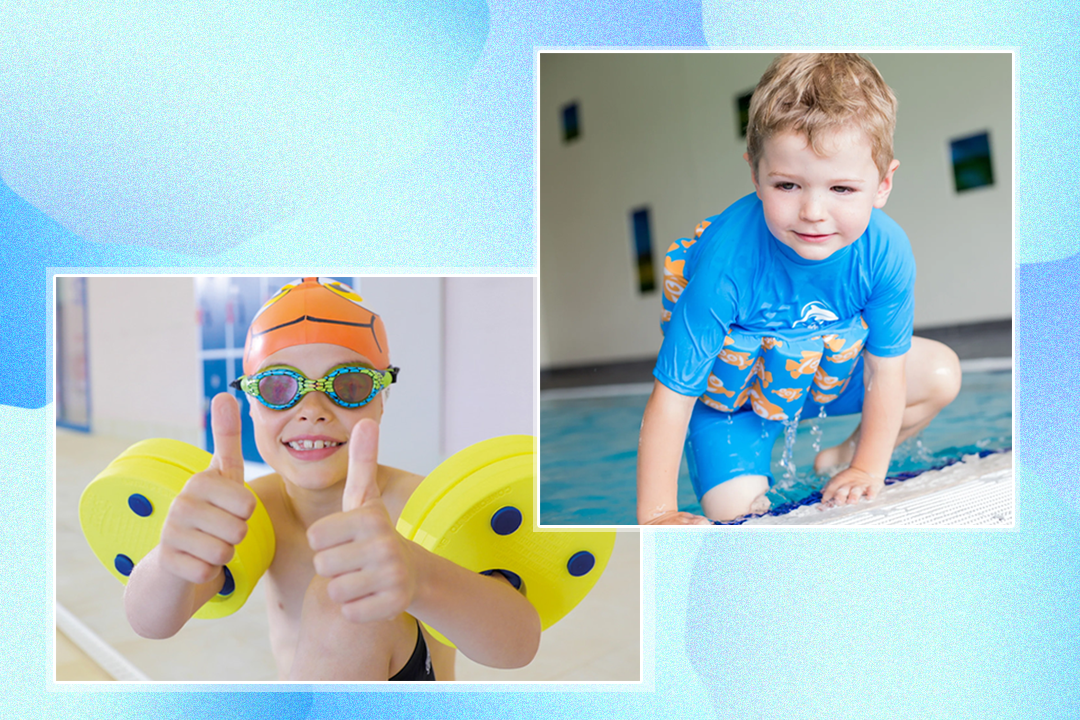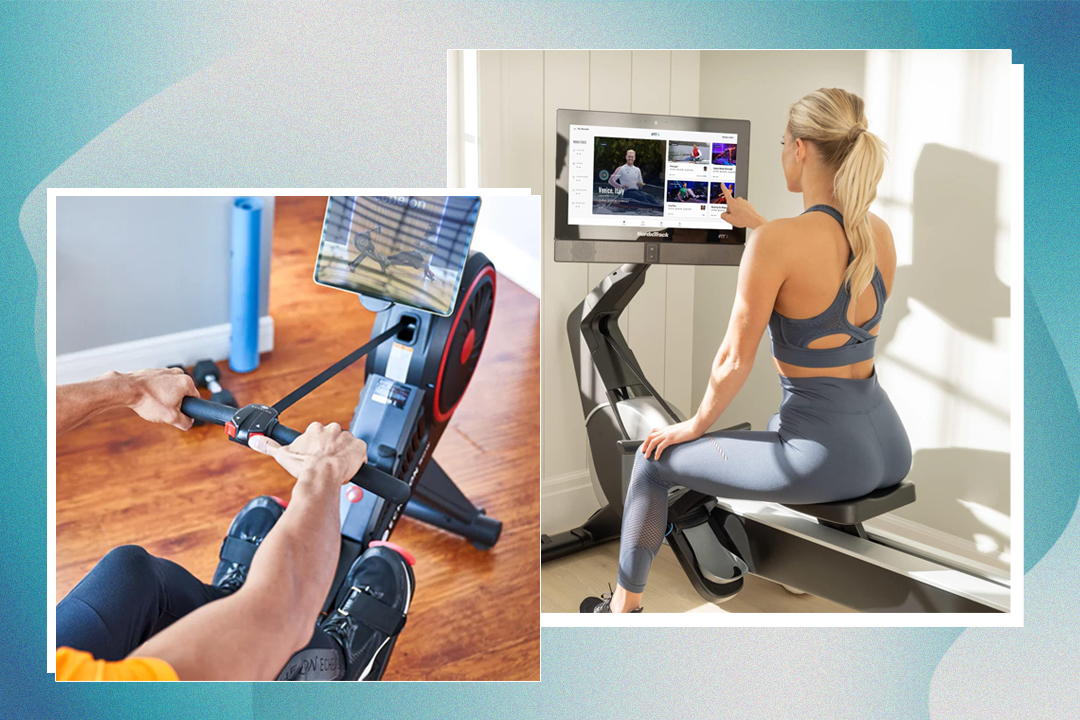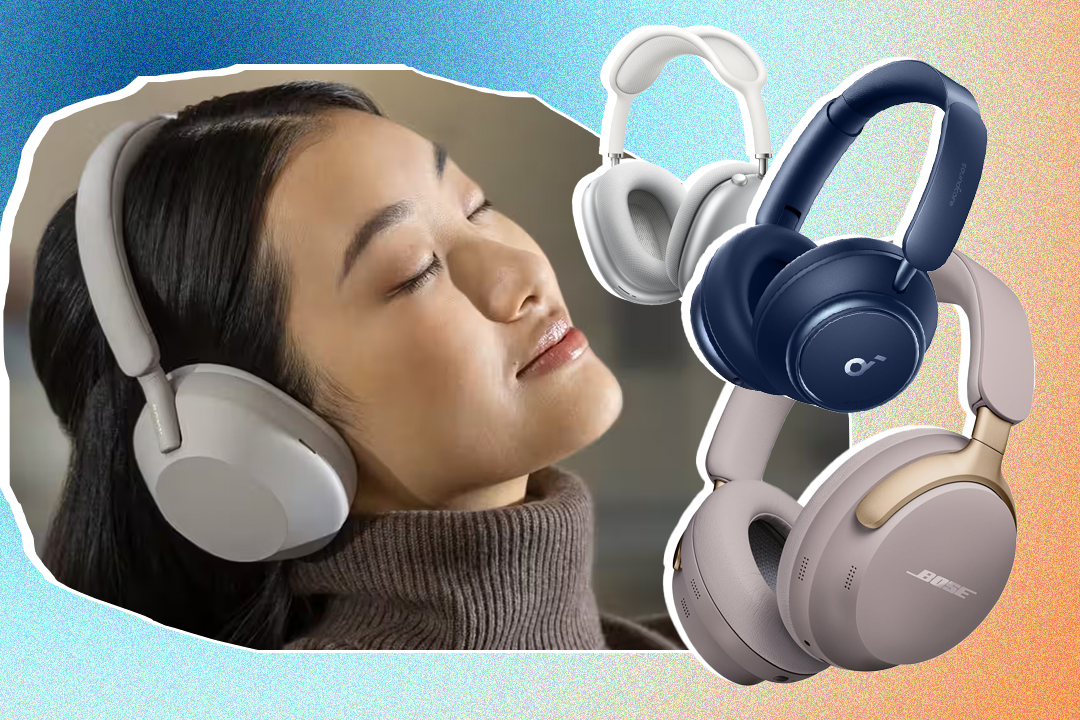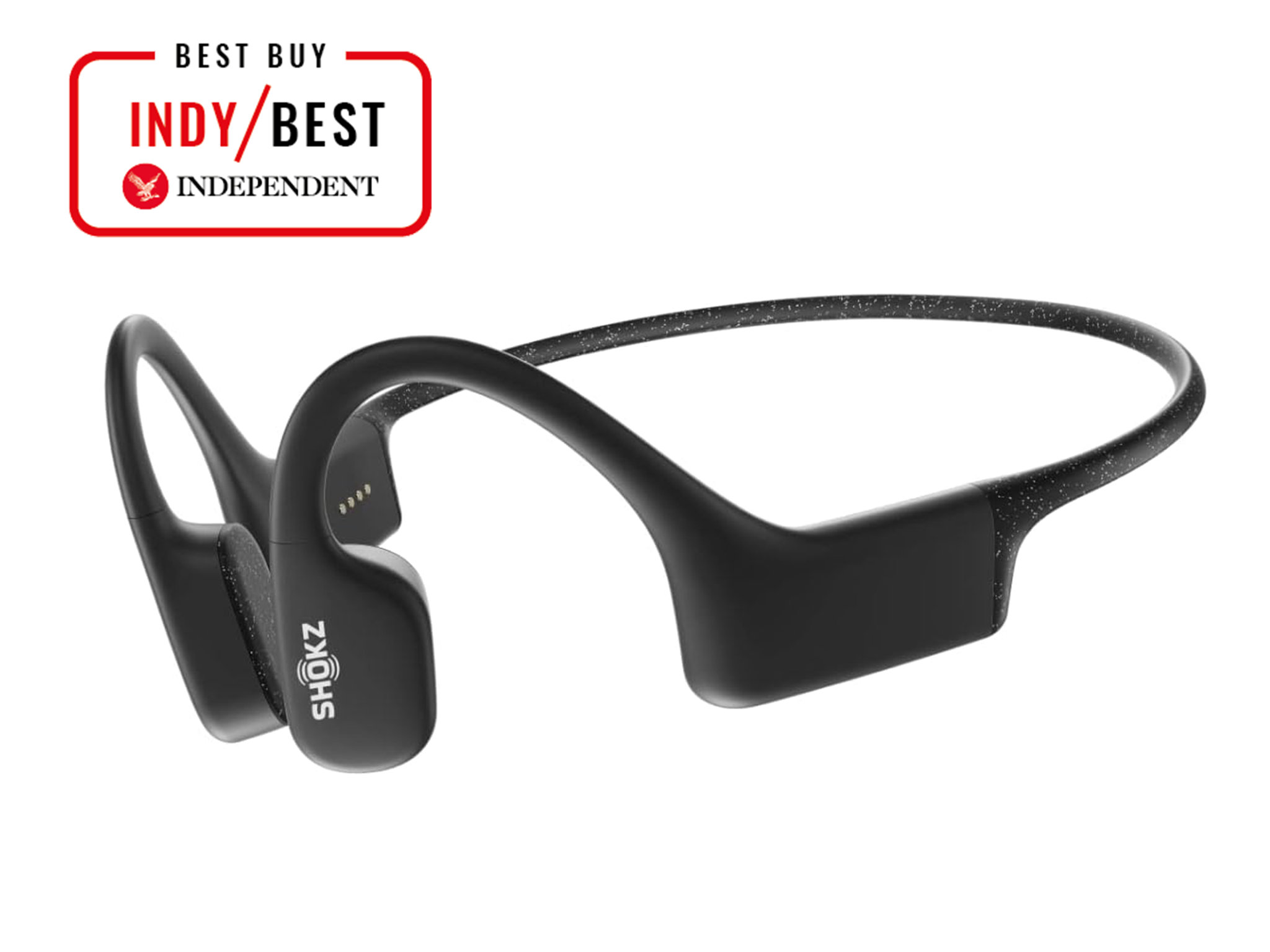
The Independent's journalism is supported by our readers. When you purchase through links on our site, we may earn commission. Why trust us?
The best waterproof headphones for swimming, tried and tested
For the pool, running and more, these are the waterproof headphones making a splash
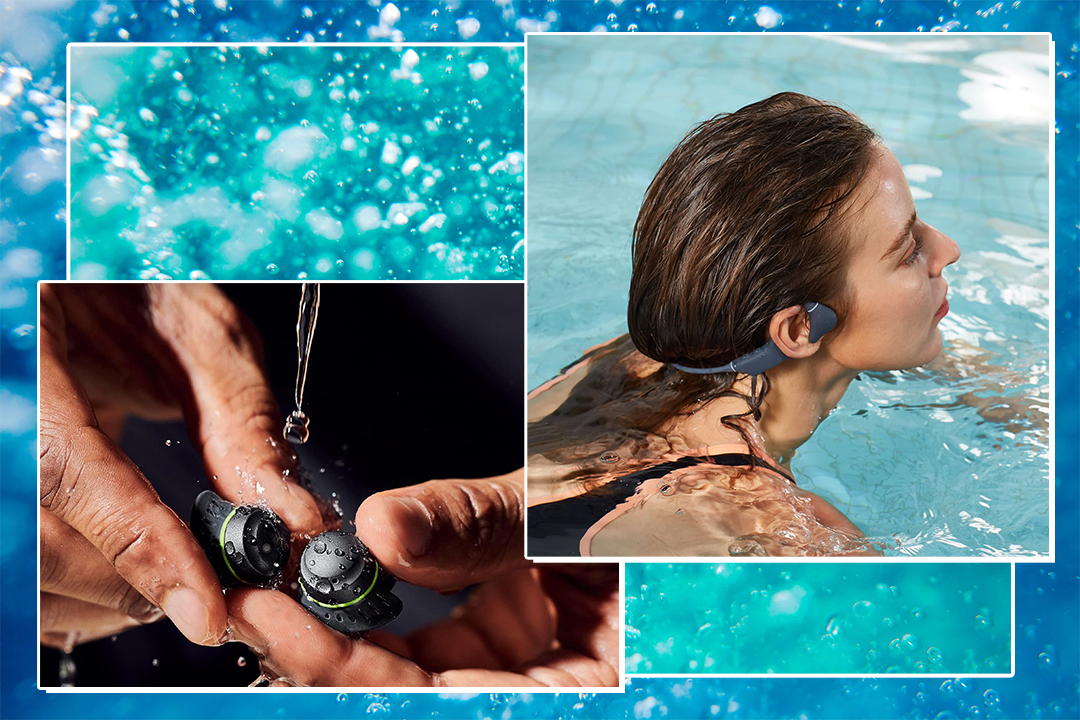

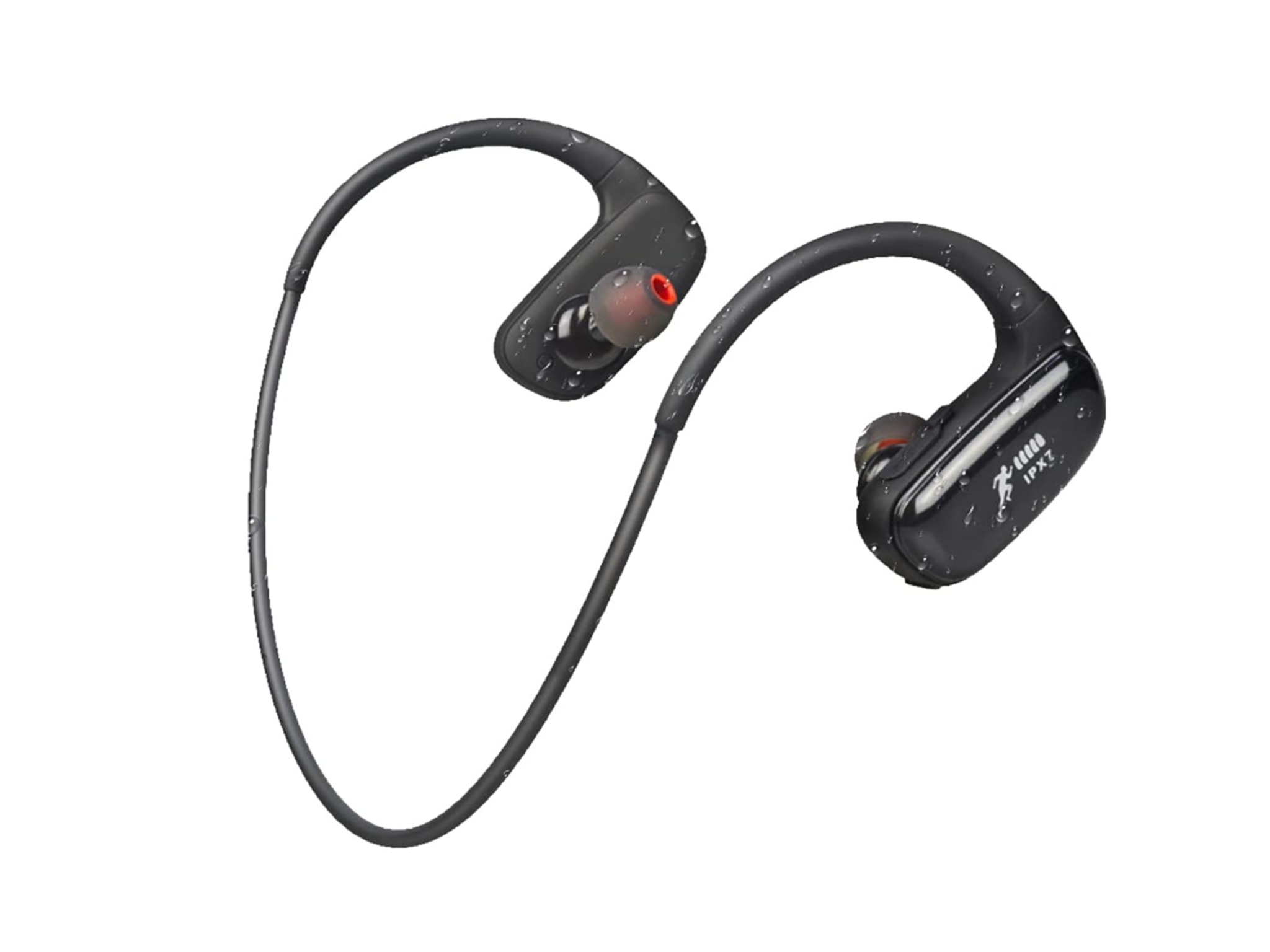
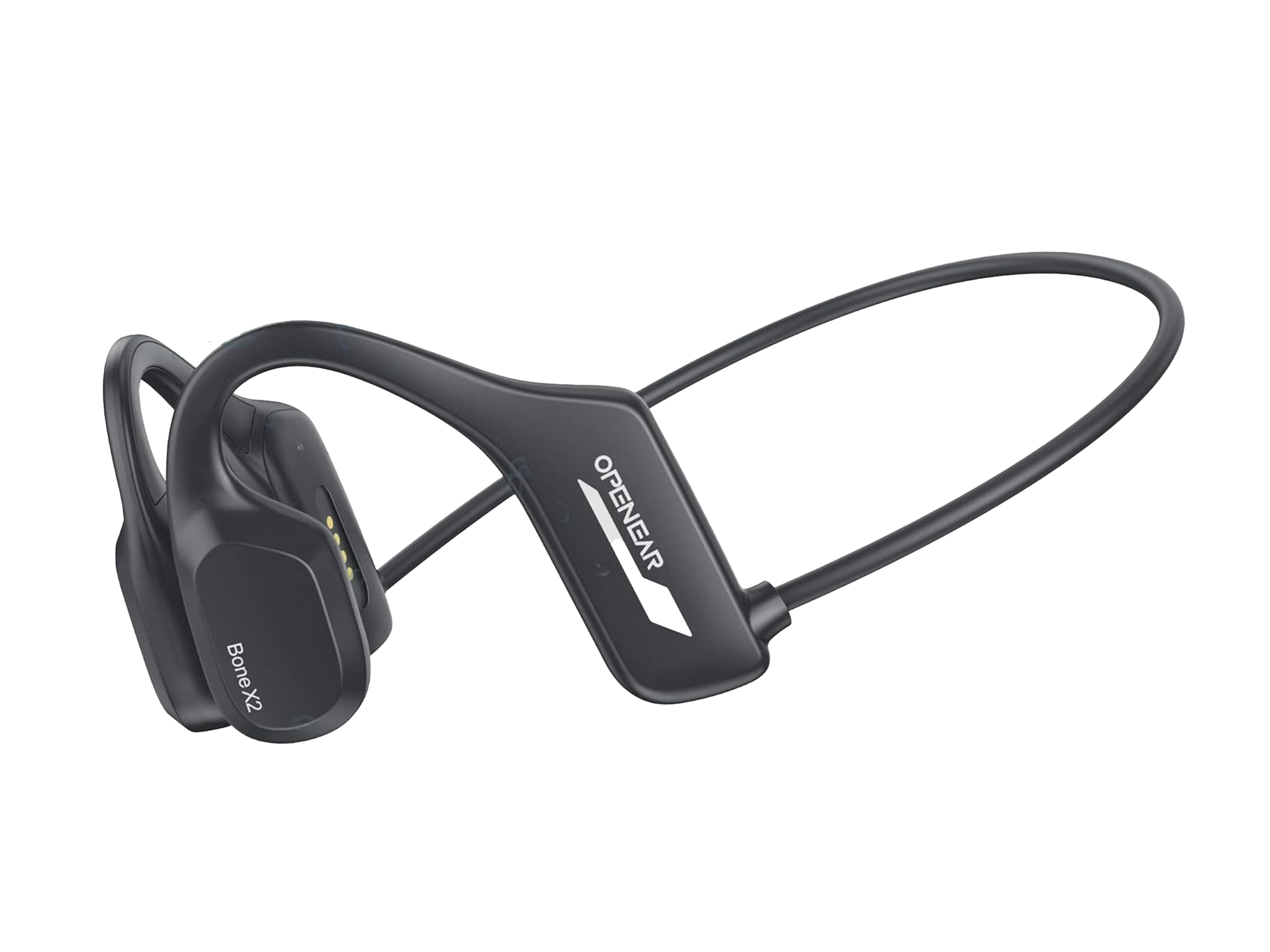
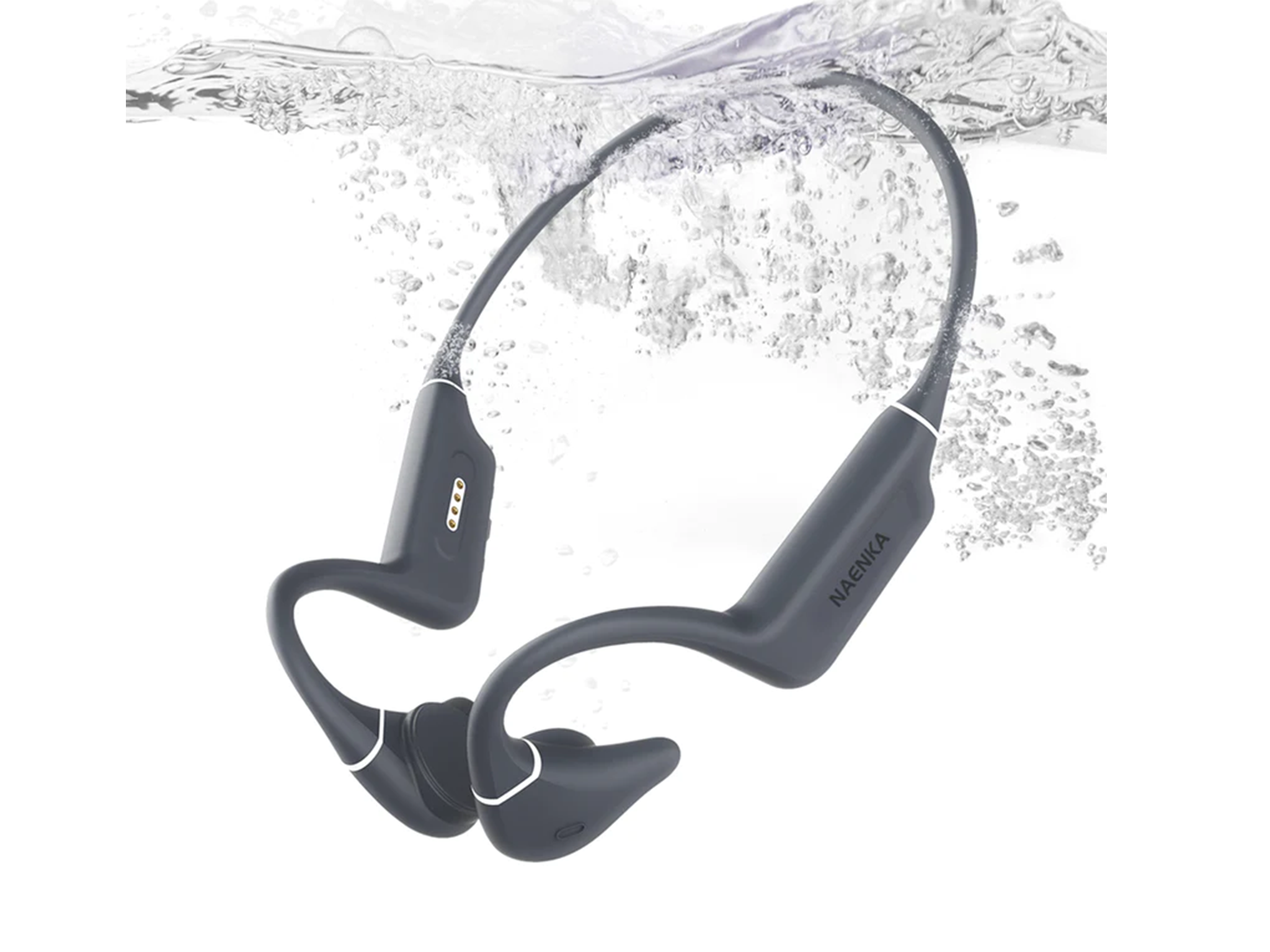 Best waterproof headphones for swimming and runningNaenka runner diver2 swimming headphonesRead review£125
Best waterproof headphones for swimming and runningNaenka runner diver2 swimming headphonesRead review£125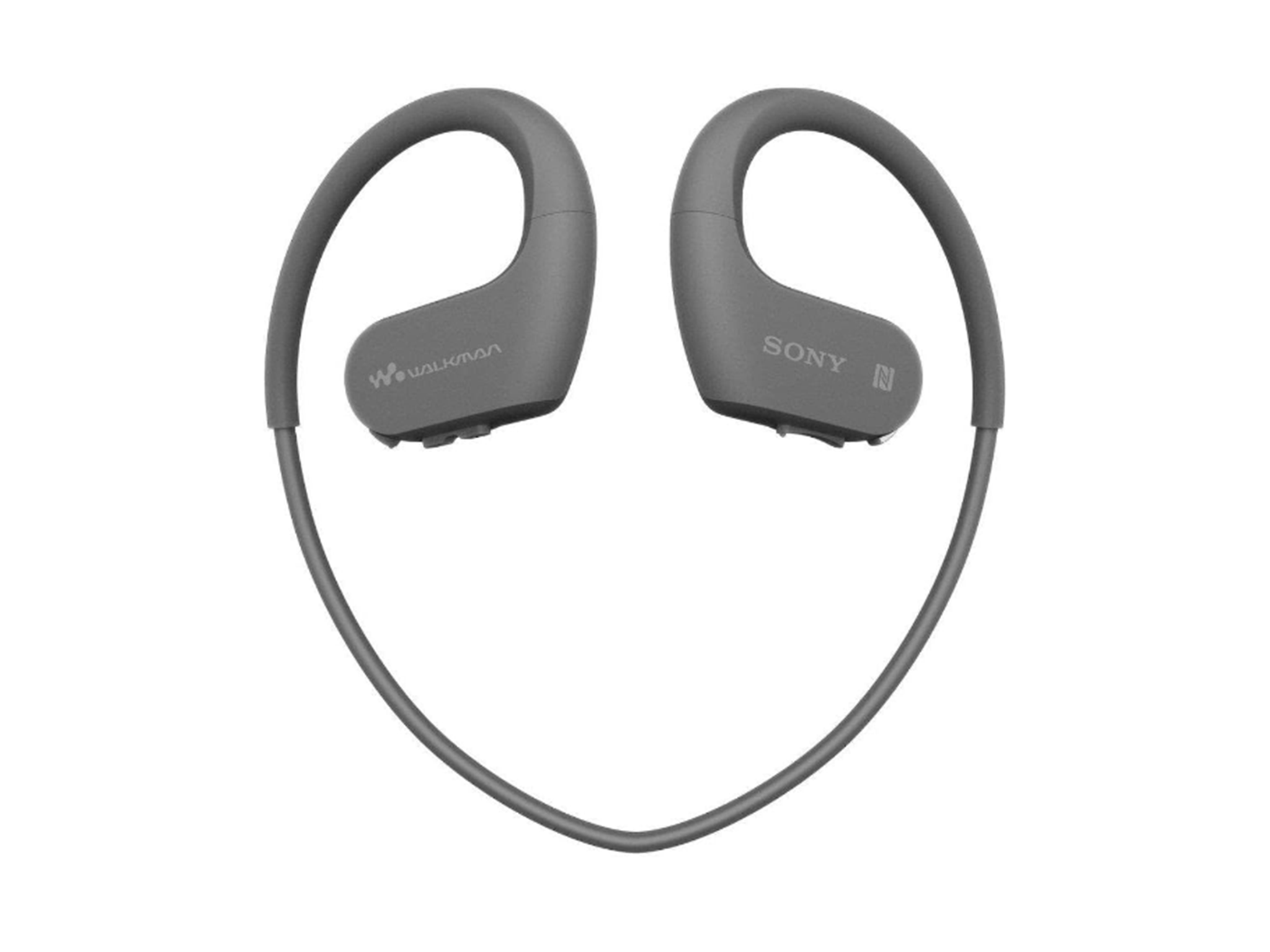 Best waterproof headphones for design Sony NW-WS623 waterproof MP3 player headphones with BluetoothRead review£100
Best waterproof headphones for design Sony NW-WS623 waterproof MP3 player headphones with BluetoothRead review£100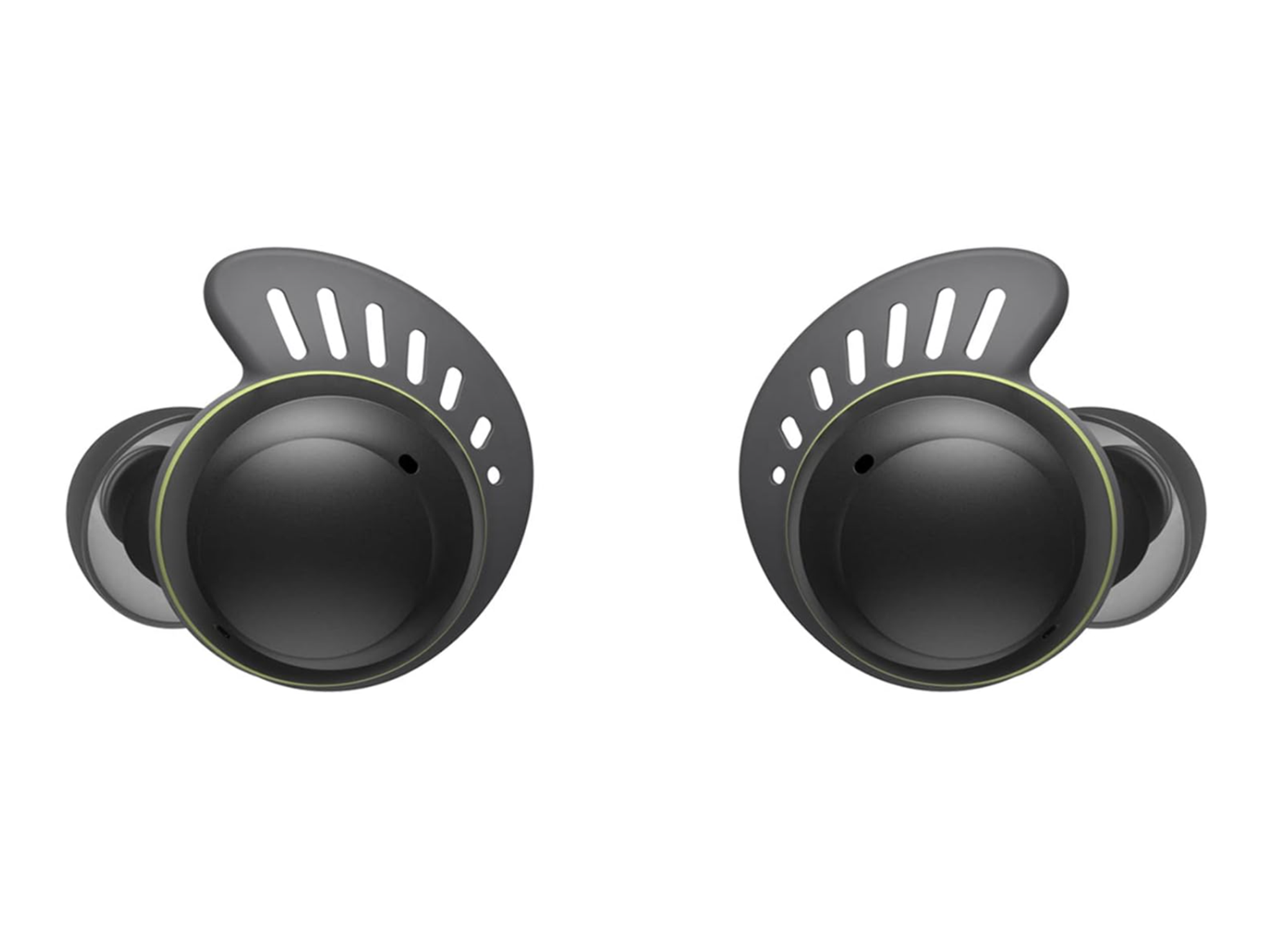
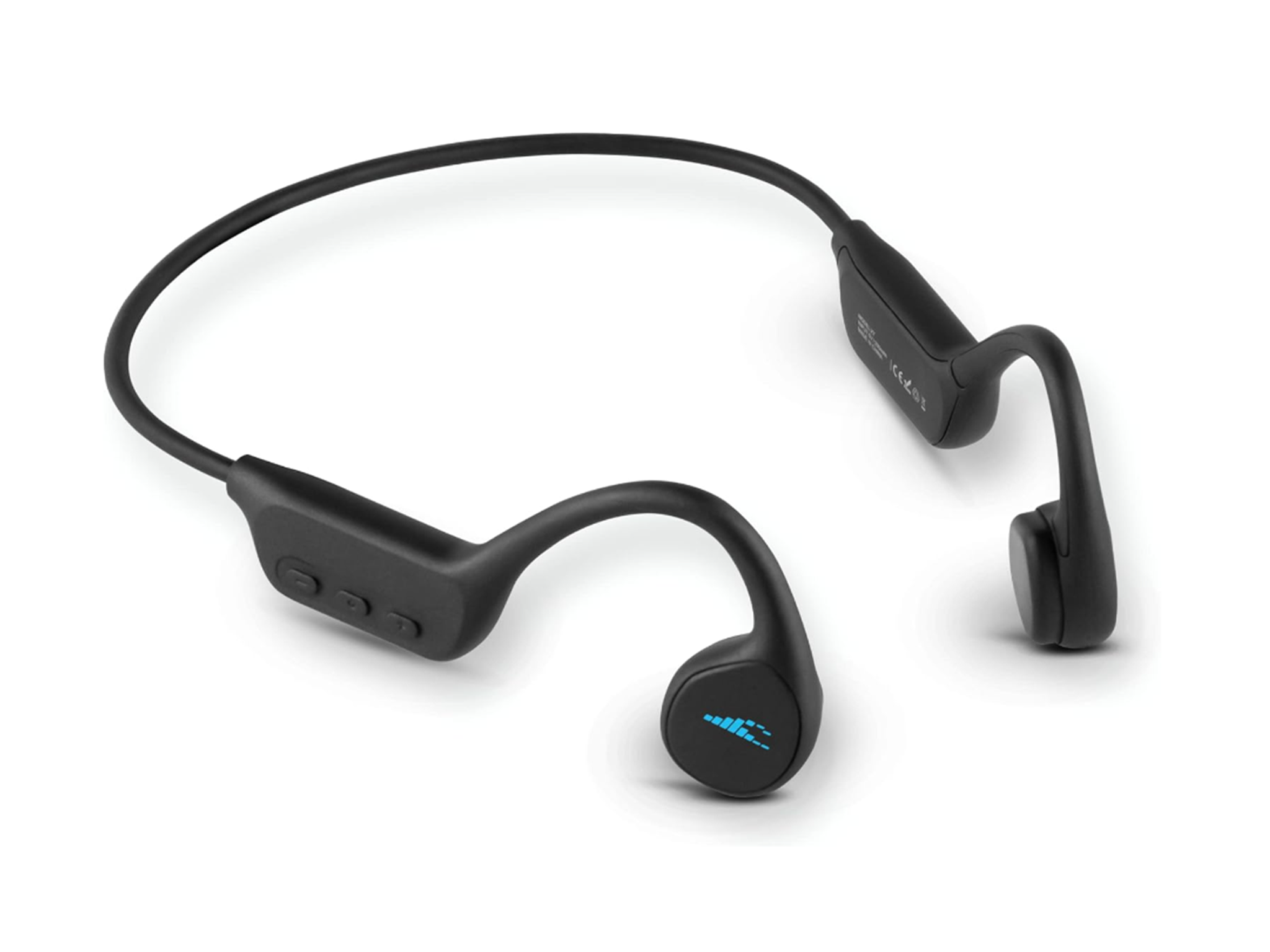
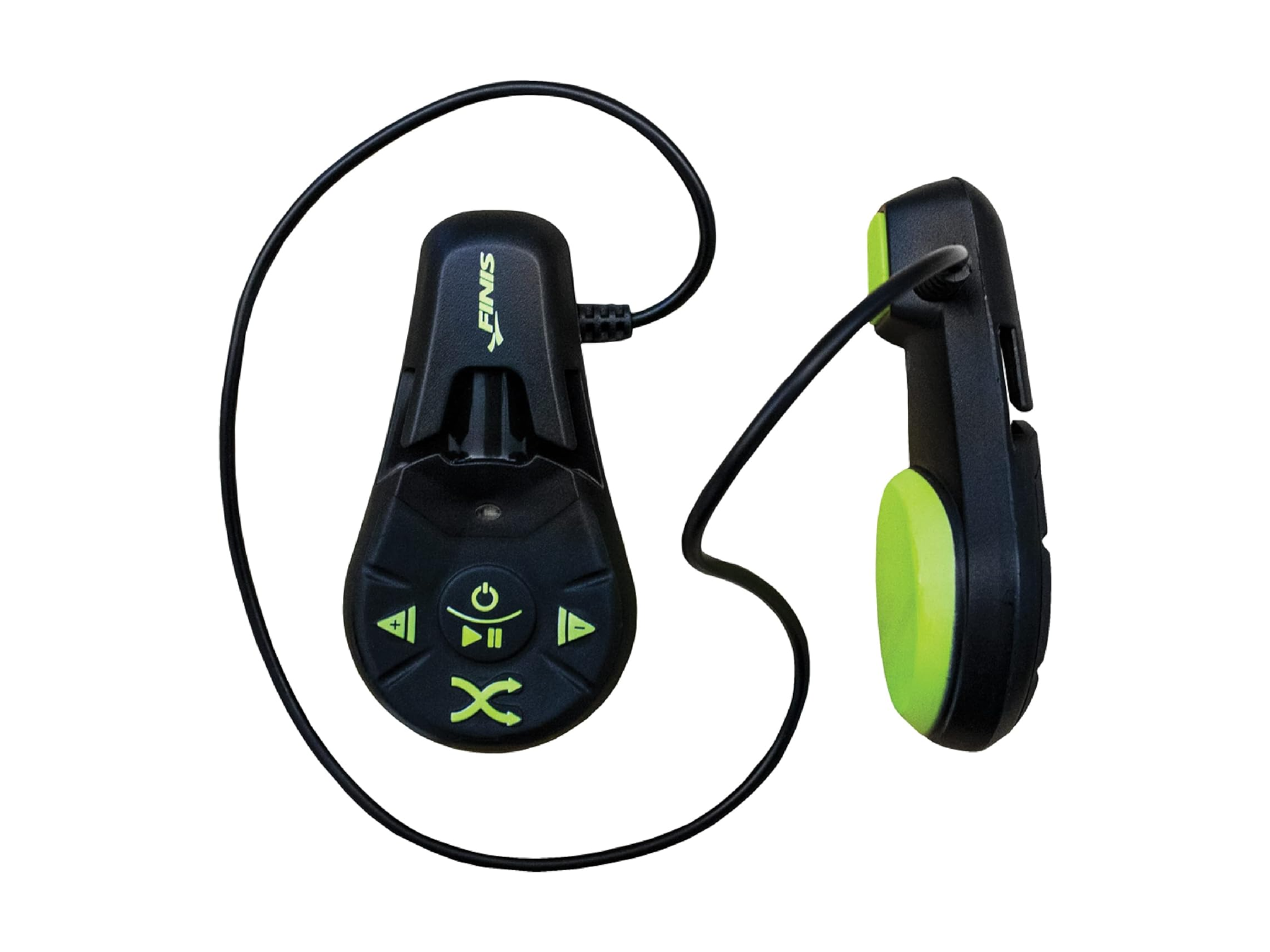 Best waterproof headphones for a secure fitFinis duo open ear bone conduction headphonesRead review£113
Best waterproof headphones for a secure fitFinis duo open ear bone conduction headphonesRead review£113
Listening to music during a workout can boost pace and distract you from fatigue, whether you’re exercising on dry land or in water. For the water babies among us, whether your exercise of choice is swimming, surfing or paddleboarding, or even if you just enjoy running in the rain (to each their own), the choice of waterproof headphones has never been greater.
As water disrupts Bluetooth, you can’t just wear regular headphones and stream the music from your phone if you’re exercising underwater. Waterproof headphones for swimming have built-in music storage, so the sound streams directly from the headset. Any tracks you’ve downloaded to your laptop, phone or tablet need to be synced to the headphones before you start your session.
There’s a little more flexibility if you’re not fully submerging yourself but you still need to look for a waterproof rating of IP67 or above, which means the headphones can withstand 30 minutes of being in water at a depth of 0.5m.
The design of waterproof headphones for swimming has improved a lot in recent years, as technological innovations have helped reduce the size, and streamline the shape, so they’re not as heavy or bulky as they used to be. Prices have also come down as the technology’s improved, so we were intrigued to find out the differences between waterproof headphones at different price points.
Without further ado, let’s dive into our pick of the best waterproof headphones on the market.
How we tested the best waterproof headphones
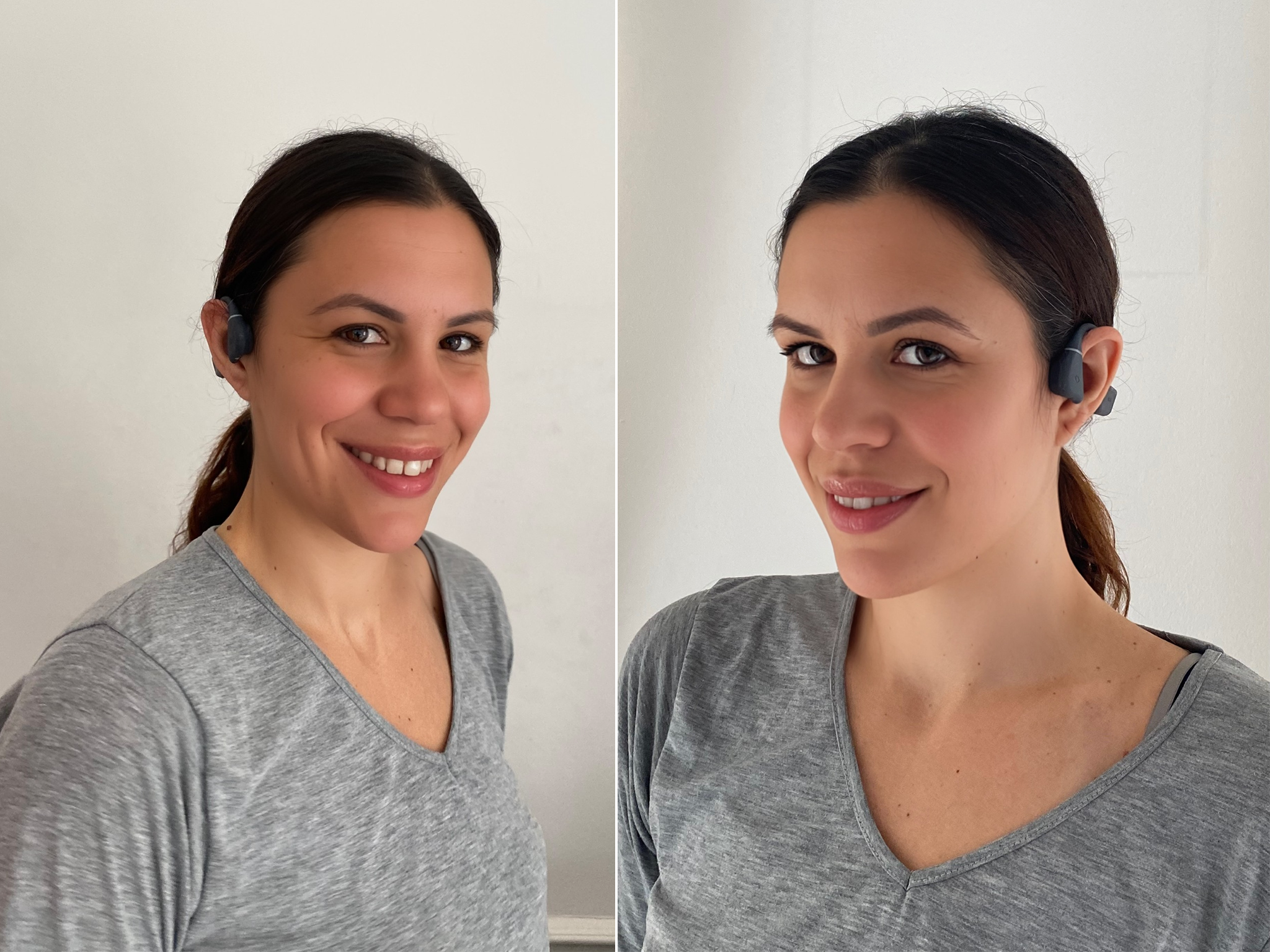
We put each pair of waterproof headphones to the test for a week, while carrying out a 2km solo swim session, an interval session with flippers and pool buoys, and while running on dry land, to see how they fared there, too. We rated the headphones on how easy it was to download songs, and how our music sounded underwater, in terms of clarity and bass.
The best waterproof headphones for 2024 are:
- Best waterproof headphones overall – Shokz open swim: £139, Amazon.co.uk
- Best budget waterproof headphones – Cyboris swimming headphones: £36.99, Amazon.co.uk
- Best waterproof headphones for comfort – Guudsoud store bone conduction MP3 headphones: £52.49, Amazon.co.uk
- Best waterproof headphones for swimming and running – Naenka runner diver2 swimming headphones: £125.50, Naenka.com
- Best noise-cancelling waterproof headphones – LG tone free fit UTF8 waterproof earbuds: £157, Amazon.co.uk
Shokz open swim

- Best: Swimming headphones overall
- Weight: 30g
- Battery life: 8 hours
- Internal storage: 4GB
- Material: Nickel-titanium alloy, silicone covering
- Bluetooth: No
- Waterproof rating: IP68
- Why we love it
- Very comfortable
- Lightweight
Featherlight and with an ergonomic design that fits comfortably under a swim cap, these were a joy to wear. As the headband is made from silicone, there was no friction when we used these in the pool – when the music wasn’t on, we had to keep checking the headphones hadn’t slipped off, as their presence was barely noticeable.
It was super simple to load tracks to and from the player by inserting the charging cable into our laptop’s USB port. There, an OpenSwim hard drive popped up and we just had to drag our audio files across. Once that was done, we couldn’t fault the sound quality. Shokz is an industry leader in bone-conduction technology (where sound is transmitted via the skull, rather than being directed at the eardrum), first making headphones that leave the ears free in 2011.
There’s truly not that much difference in sound quality between these and the brand’s openrun headphones for running, which feels pretty miraculous given there’s a whole mass of water to cut through.
Cyboris swimming headphones

- Best: Budget waterproof headphones
- Weight: 20g
- Battery life: 8 hours
- Internal storage: 16GB
- Material: Liquid silicone
- Bluetooth: Yes
- Waterproof rating: IPX7
- Why we love it
- Lightweight
- Non-slip
- Take note
- Not compatible with Apple Music
A budget-friendly option for anyone looking to venture into waterproof headphones, these have a solid 16GB of storage, so you can load them up with front-crawl-motivating power ballads as well as something slower for winding down at the end of the swim.
These waterproof headphones are also fuss-free to use. We just popped them in, used the side buttons to adjust the volume and didn’t need to touch them again until the end of our swim session. They stayed in our ears without slipping or feeling too rigid and were more comfortable than some pricier earbud headphones.
For the price, we didn’t expect Bluetooth connectivity, so we were very impressed to find it included, which was great for use when running. Weighing just 20g and with a strap made from liquid silicone, these feel super lightweight, both in the pool and on dry land.
Guudsoud store bone conduction MP3 headphones

- Best: Waterproof headphones for comfort
- Weight: 31g
- Battery life: 8 hours
- Internal storage: 32GB
- Material: Silicone
- Bluetooth: Yes
- Waterproof rating: IP68
- Why we love it
- Impressive memory storage
- Long battery life
- Stayed in place
- Take note
- Only compatible with mp3 files
With 32GB of internal music storage, which can hold around 8,000 songs, these are headphones for people who don’t like messing about with tech. We were able to transfer every single song we’ve ever downloaded onto these, so there was no need to worry about whether we’ve got our favourites locked and loaded.
There’s also no need to worry about how long you stay in the water, as these headphones have an IP68 waterproof rating to cope with being submerged up to 2m for two hours. Weighing just 31g, they’re comfortable enough to wear for that length of time, too.
The headphones fit well around the head with no drag, and we liked the compact and streamlined shape and size of the bone-conduction elements. Sound quality is decent across all music genres, and we liked how these sounded during the faster, motivational tracks.
These waterproof headphones also worked well while running, when we could use the Bluetooth mode to play Spotify and iTunes audio. There’s an impressive eight hours of battery life, too, so you can get out of the pool and go for a run straightaway, should you feel fit enough. A built-in mic means we could stay connected and take calls during long exercise sessions.
Naenka runner diver2 swimming headphones

- Best: Waterproof headphones for swimming and running
- Weight: 32g
- Battery life: 10 hours
- Internal storage: 32GB
- Material: Triple layered waterproof silicone
- Bluetooth: Yes
- Waterproof rating: IP68
- Why we love it
- Easy to switch between Bluetooth and Mp3 mode
- Take note
- Headband isn’t adjustable
If you’re looking for waterproof headphones that enable you to switch between playing stored songs and streaming music or podcasts, Naenka has made just the pair for the job.
Complete with Bluetooth connectivity and MP3 storage, the runner diver2 swimming heaphones look similar to the Shoxz openswim pair, with a thin black headband and bone-conduction pads, but Naenka’s pair offer extra flexibility when you’re on dry land, so you’re not forced to constantly change up your playlist.
While in MP3 mode, music tracks play either in the order you added them or shuffled. We recommend using the earplugs included, as it enhances the playback through the bone, making songs sound clearer and louder.
The only downside is there’s no way of adjusting the headband, so, those with a smaller head may find they drag a bit in the water, unless they’re locked in place with a swim cap.
Sony NW-WS623 waterproof MP3 player headphones with Bluetooth

- Best: Waterproof headphones for design
- Weight: 32g
- Battery life: 8 hours
- Internal storage: 4GB
- Material: Silicone
- Bluetooth: Yes
- Waterproof rating: IPX8
- Why we love it
- Sleek grey colour
- Great sound for dry-land workouts
- Take note
- Need to affix using goggles
- Easy to dislodge when swimming
This may look like another pair of bone-conduction waterproof headphones, but Sony’s NW-WS623 pair features ear buds, providing a more traditional headphones experience.
For running and gym workouts, Bluetooth connection was excellent, even in a basement gym, and we were able to enjoy our music while still hearing a little of the ambient noise around us, so we didn’t feel completely cut off. With a variety of ear tips included for dry-land workouts, we were able to ensure a snug fit inside the ear, so music sounded louder and richer.
However, when it came to using these waterproof headphones while swimming, things became a bit fiddlier. There’s only one size option of waterproof ear tips, which have a seal to stop water leaking in. We found this meant they were prone to falling out when we moved too fast in front crawl and we had to end the first session early, as we couldn’t get them to stay put. Once we’d revisited the instructions, though, we realised that putting the strap of our goggles over the wings was enough to fix them securely. Just remember, if you want to adjust your goggles during a swim, be careful to make sure you put them back in the right spot.
LG tone free fit UTF8 waterproof earbuds

- Best: Noise-cancelling waterproof headphones
- Weight: 5.9g
- Battery life: 30 hours
- Internal storage: N/A
- Material: Medical grade silicone
- Bluetooth: Yes
- Waterproof rating: IP67
- Why we love it
- Stay in place
- Lightweight
- Take note
- No MP3 mode, so can’t listen to music underwater
Compared with other waterproof headphones we tested, these have a unique design. Instead of hooking over the ears, they slip inside the ear (like normal buds) then you rotate them, so the ‘wings’ lock them in place, preventing them from falling out. The secure fit did a great job of isolating the audio, offering excellent sound quality. We were impressed by the 5.9g lightweight feel, and it was refreshing not to have to worry about a strap around our head.
Within our round-up, these are also the only waterproof headphones with antibacterial technology, killing 99.9 per cent of germs when you pop the buds in the charging case. Battery life is also among the best on test – 10 hours plus another 20 held in the charging case.
The two downsides, however, are that the IP67 waterproof rating means these headphones are only recommended for use up to 30 minutes when fully submerged in water, and they don’t have internal storage. The second issue is easier to solve as it was simple to connect these to both our smartwatch and iPhone to play music via Bluetooth, but this was only effective when we did breaststroke above water.
These are great headphones for anyone coming from the gym to cool down in the pool, though, especially as you can get into your own zone with noise cancellation and shut out the sounds of other people splashing and chatting. Extra bonus points are awarded for the fact they work in the sauna, too.
H20 audio tri bone conduction headphones

- Best: Mid-range waterproof headphones
- Weight: 32g
- Battery life: 6 hours
- Internal storage: 8GB
- Material: Silicone
- Bluetooth: Yes
- Waterproof rating: IPX8
- Why we love it
- Easy to connect to a smartwatch
- Easy to adjust controls
- Take note
- Large neckband causes drag
With an IPX8 waterproof rating, you could swim at a depth of 3m in these, so, in theory, you could take them snorkelling as well as swimming. Out of the box, there’s not much difference between these and the Shokz bone-conduction headphones, except for the price – these are almost £50 cheaper. However, the strap on these feels a little flimsier when in the pool, which meant we needed to make sure they were firmly under our swim hat, otherwise, they felt a little distracting.
The controls on the side of each ear piece are generously sized, so it’s easy to turn up the volume mid session when a good tune comes on. Battery life lasts up to six hours, which would appeal to triathletes who are planning to bike to the pool, smash out a swim then go for a run.
If you’re running, you don’t even need to take a phone with you. These can connect via Bluetooth to a smartwatch, so, we were able to play music and podcasts that way. There’s something about exercising without a phone that makes us feel liberated, and these headphones helped fuel that.
Finis duo open ear bone conduction headphones

- Best: Waterproof headphones for a secure fit
- Weight: 149g
- Battery life: 7 hours
- Internal storage: 4GB
- Material: Plastic
- Waterproof rating: IPX8
- Why we love it
- Easy controls
- Stayed in place beautifully
- Take note
- Heavy
These may be the heaviest of all the waterproof headphones we tested, but they also have the biggest controls, making them easier to use. Another positive is you can clip the headphones onto your goggles, meaning they’ll never dangle off the back of your head in the water or rub against your swim hat. We felt that clipping them in place added an extra level of security, and made them more streamline. They stayed in place next to the jawbone, with the sound coming through nice and clear.
The downside is there’s no Bluetooth mode. This might not be an issue for you but it’s something to bear in mind before parting with more than £100.
Waterproof headphones FAQs
What is an IP rating?
Standing for “ingress protection”, an IP rating indicates how well a device is protected from both solids and liquids. Generally, it’s displayed with two digits – the first of which tells us how well the device is protected from things such as dust, while the second tells us how resistant it is to water. The higher the rating, the better your device will be protected.
Which IP rating is best?
In this round-up, we haven’t included any waterproof headphones with a rating lower than IPX7. This rating indicates a device can withstand being submerged in water up to 1m deep for 30 minutes – so should be fine for your standard lane-swimming session.
However, the best waterproof headphones will have a rating of IPX8. This usually means your device can withstand being submerged for one hour at a depth of around 2m (this can vary between devices).
The verdict: Waterproof headphones
Lightweight, comfortable and with excellent sound quality, the beauty of the Shokz openswim was that we never had to think about them mid-swim – we just hit play and they stayed in place perfectly. If you do a lot of running or gym workouts as well as swimming, we highly recommend the Naenka runner diver 2 headphones, which offer crisp and clear sound underwater and on land. Meanwhile, the Cyboris swimming headphones offer excellent value for anyone on a tighter budget.
Ditch annoying wires, and tune in to the best wireless earbuds, tried and tested
Voucher Codes







